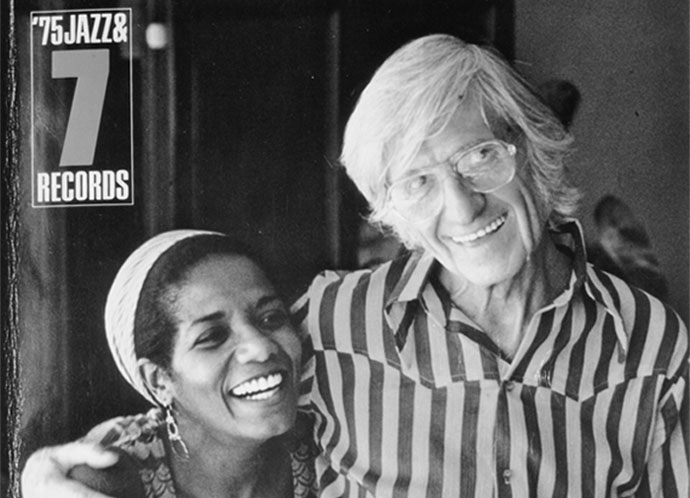 Jazz Profiles Gil Evans: The Arranger as Re-composer (Part 4)
Ben: Was it Claude's idea to include the French horns and the tuba, initially? Gil:
The French horns were his idea, yeah. But the tuba, I got that in
there. And the flutes. But the French horns he had quite a while. He had
them before the war, too, you know. He
was like a practical joker, in a way. And so a clarinet was out in
front of the band playing "Summertime"... I don't know if you ever heard
of a clarinet player named Fazola? Ben: Sure, Irving Fazola. Gil:
Beautiful tone, and oh, no one ever had a more beautiful tone than
Fazola. So he's out there playing "Summertime," and Claude signaled to
these two guys, and they came up from the audience and sat down and
started playing these French horns in sustained harmony underneath him.
And nobody in the band knew that was going to happen. Faz couldn't
believe it. He looked around. But
the band sounded like horns anyway, even before he got them. It was one
of the first bands that played without a vibrato, you know. Because
the vibrato had been "in" all the time in jazz, ever since, well, Louis
Armstrong, you know, that vibrato. But
then Claude’s band played with no vibrato, and that’s what made it
compatible with bebop. Because the bebop players were playing with no
vibrato. And they were interested in the impressionistic harmony, you
know, that I had used with Claude. Minor ninths and all that. That's
how we got together, really. That's the reason we got together. Because
of the fact that there was no vibrato plus the harmonic development.
Because up until that time, with the swing bands, mostly the harmony had
been from Fletcher Henderson, really. Where you harmonize everything
with the major sixth chords and passing tones with a diminished chord,
you know. So that was how things changed with bebop. Ben:
Also, the addition of the French horns and the tuba got the
arrangements out of the more traditional "sections"—brass section,
woodwind section—and made it more of a continuous palette for you. Gil:
Well, when Miles and I got together to do the Capitol record [Birth of
the Cool] we just had to figure out how few instruments, and which ones,
we could use to cover the harmonic needs of Claude Thornhill's band,
you know. Naturally, with a big band like that, you have a lot of
doubles. But we just trimmed it down to the six horns. Six horns and
three rhythm, and those six horns covered all the harmonic needs that we
had. … Ben: That particular recording very quietly started some sort of revolution in jazz. Gil: I wasn't even there. You know, I had to go home to see my mother in California,
so I wrote that arrangement and gave it to Miles. But we were all so in
tune with each other that I didn't have any worries at all. They just
played it, and when I heard it, it was as though I had been there. That's
the way it was with all the records I made with Miles, the big band
records, too. Because even though the notes were different, and they
weren't familiar with the arrangements, they were so familiar with the
idiom, you know, that we made those big band records in three three-hour
sessions with no rehearsal. Nowadays, that's unheard of, right? You get
a hundred hours, now, or more. But we got nine hours to make that
thing, with no rehearsals. But the band, the whole band I picked out,
they had the idiom under their fingers. So it was possible to do that. Ben:
That band, the "Boplicity" band, came together through a series of
informal gatherings at your apartment over a couple of years. |
|

